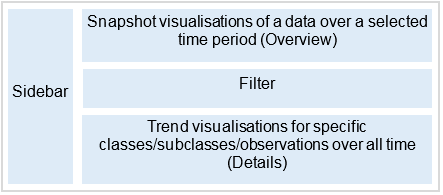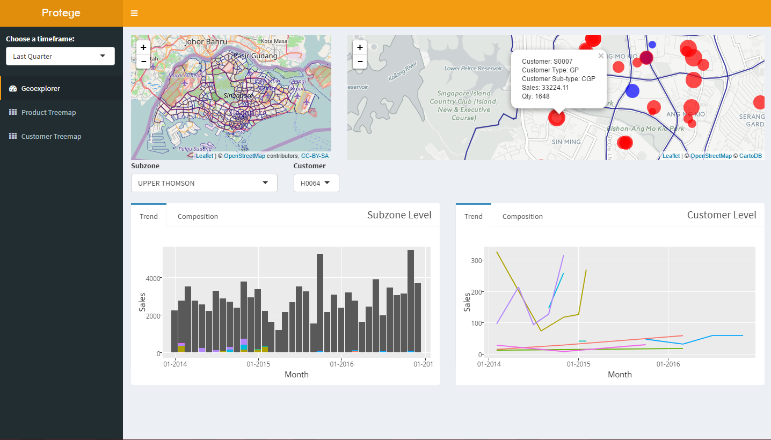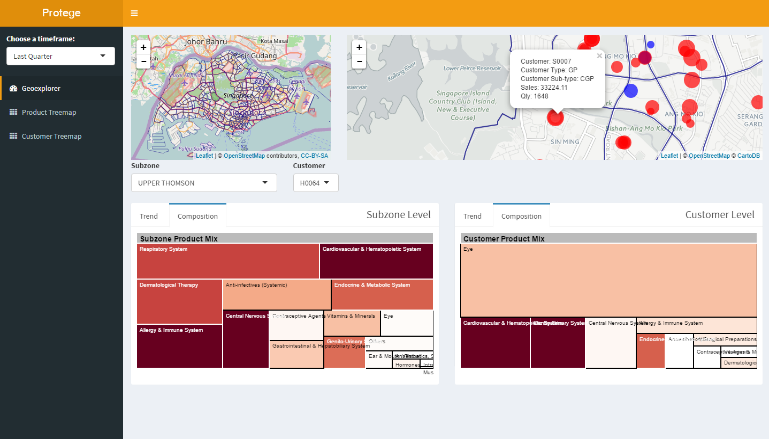ANLY482 AY2016-17 T2 Group19 Documentation
Key Deliverables
Reports and Minutes will not be available due to client confidentiality
Interactive Visual Analytical Dashboard
1. User Interface Design
Figure 1
The Interactive Visual Analytical Dashboard (IVAD) presents transactional data in 3 main perspectives to provide a holistic view of the data: Geospatial, Product, Customer Type. This approach was based off the 5 Ws of information gathering, with geospatial relating to Where, product relating to What, Customer Type, relating to Who. Alongside with these 3 perspectives, a consistent underlying philosophy was taken to the UI design, following the Schneiderman’s Mantra: overview, zoom and filter, details on demand. This was implemented by creating 3 distinct portions in every perspective view: Snapshot, Filter, Trend. The Snapshot portion acts as an overview/navigation panel that takes the form of either a web-map or a tree-map, alongside with a simple bar chart/heatmap. The Snapshot portion utilises data from a selected time frame with two levels of data visualisations: a snapshot level relating to a certain time frame that is selected in the sidebar (overview) and displayed alongside trend information (detail) in the form as shown in Figure 1. This would be further elaborated below with regards to the various perspectives.
Geospatial Perspective A geospatial overview is provided at the initialisation of data with a snapshot of the past quarter’s customers displayed as a proportional symbol map next to a synced control map that is zoomed out to give an overview of the entire map. This acts an overview of the data with the proportional symbol also acting as a navigation panel with clicks leading to a reactive filtering of data and the generation of trend charts on subzone performance alongside specific individual customer performance over time as seen in Figure 2. In addition, users can probe into the composition of the performance of each subzone or individual customers with a tree-map and this provides a more effective visualisation of multivariate information on both sales and quantity information with respect to different categories or specific products. This also allows for a comparison of a specific customer against its peers within the same subzone. (Figure 3)
Figure 2
Figure 3



